What Happened to Susan Capino?
In 1997, 17-year-old Susan Capino vanished from her home in Jefferson County, West Virginia. Four years later, her remains were found—but no suspect was ever named, and her body was never returned. This is the story of a disappearance, a failed investigation, and a family still waiting for answers.
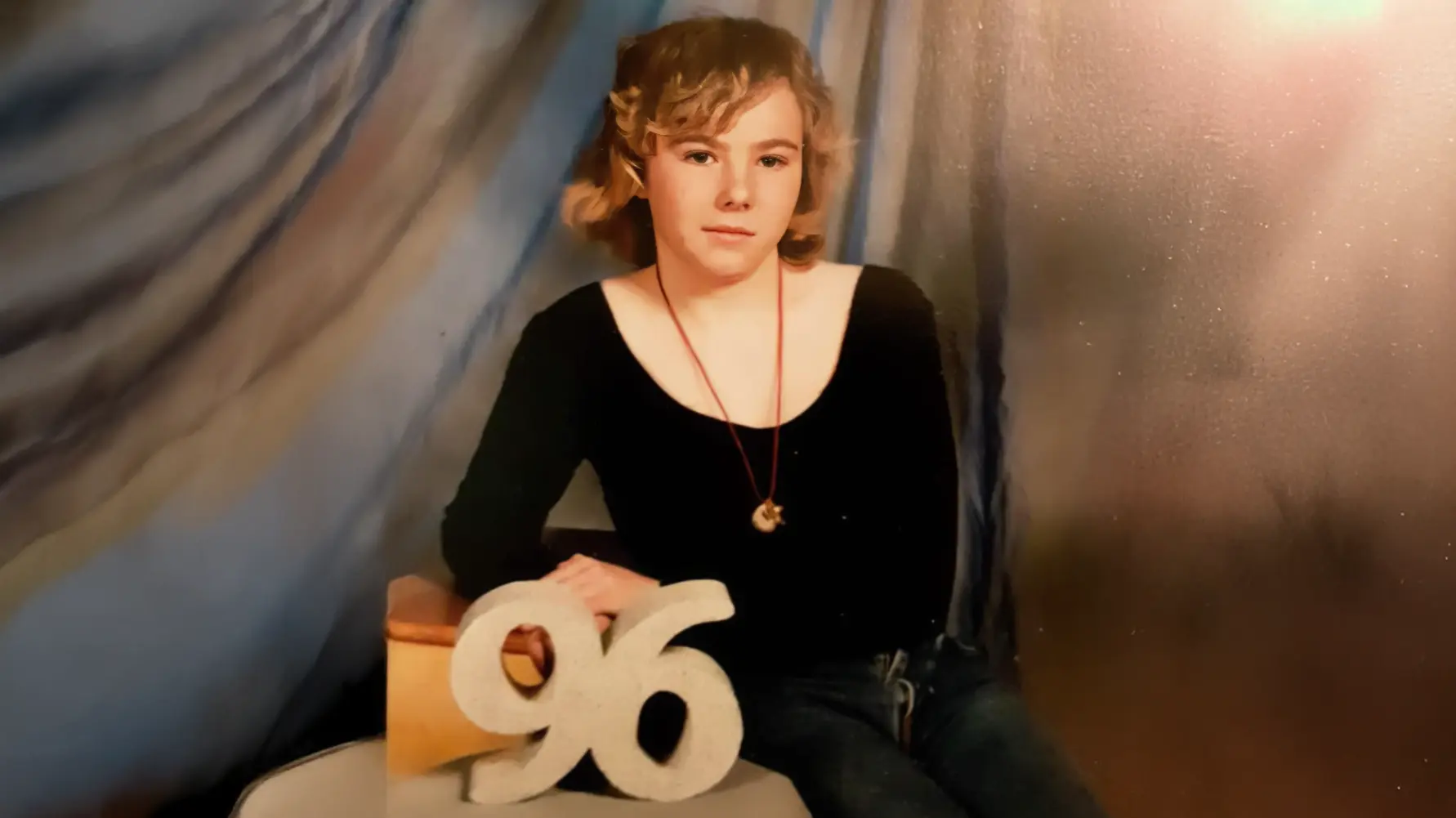
This article is based on interviews with Susan Capino’s mother, Joyce Lonas, and half-sister, Audrey Hess. At the time of publication, multiple public records requests had been submitted to law enforcement agencies in West Virginia and Virginia, as well as the FBI. All requests were denied or returned no releasable material, with the exception of a pending FOIA request to the FBI, which is not expected to be fulfilled for several years.
Since its initial publication, this article has appeared as a two-part special (part 1 and part 2) in The Journal newspaper of Martinsburg, West Virginia.
Editor’s note (Oct. 2, 2025): Since this story first ran, Susan’s remains were returned to her family in a private service in Harpers Ferry. The case remains open with the West Virginia State Police. Details in my follow-up.
A Mountain, a Girl, a Vanishing
On a summer night in 1997, seventeen-year-old Susan Capino stormed out of her family’s home in the Westridge Hills subdivision—a suburban mountain-slope community in the Shannondale area of Jefferson County, West Virginia. It was a sleepy rural enclave, once a vacation development, now a tucked-away corner at the edge of the Washington, DC metro area. She was angry—or maybe just needed an excuse to leave—after a small argument over the dishes. Her stepfather watched her slip into the trees behind the house. A moment later, headlights flashed through the woods, followed by the glow of red taillights pulling away.
She was never seen alive again.
Susan had run away once before—briefly, at fourteen—so her family waited. When a day passed with no word, they called the police. The response was slow and uncertain. Officers treated her as a runaway. Troopers searched the dense Blue Ridge woods. Neighbors whispered.
Eventually, the FBI joined the case. The family home was searched. Two vehicles were impounded. Cadaver dogs were brought in. But no arrests were made. No body was found. And with time, attention faded.
Then, nearly four years later, a body was found.
On June 8, 2001, cadets searching for evidence in an unrelated homicide stumbled across a skull in a wooded ravine near Keys Gap, Virginia, just across the border from where Susan had disappeared. Dental records confirmed what her mother already feared: Susan Capino was dead, murdered by blunt force trauma to the head. Her remains had been hidden in plain sight, less than a mile from where two other bodies had surfaced that same spring.
But the breakthrough yielded no answers. No suspect was ever named. No arrest was made. And more than two decades later, her remains have still not been returned to her family—or even explained.
This story traces Susan’s life and disappearance, the flawed investigation that followed, and the mountain geography that may have helped bury the truth. It is based on interviews with family members, public records, news archives, and local memory.
It’s the story of a girl who went missing.
A girl who never came back home.
And no one ever answered for it.
Susan Capino–A Brief Life
Susan Renea-Grace Capino was born on February 10, 1980, in Winchester, Virginia. Her mother, Joyce Roop Capino (later Joyce Lonas), raised her with love and discipline in a household that was often full—of kids, of noise, of stress, and sometimes, of struggle. Her biological father was absent. Her adoptive father, Roy Capino, died when Susan was just six. Her mother later married Richard Lonas, a Navy veteran and corrections cook with a brash demeanor and a complicated presence in the family. Together, Joyce and Richard blended their children into a single household that included six kids in total—a mix of full siblings, half-siblings, and step-siblings—all under one roof.
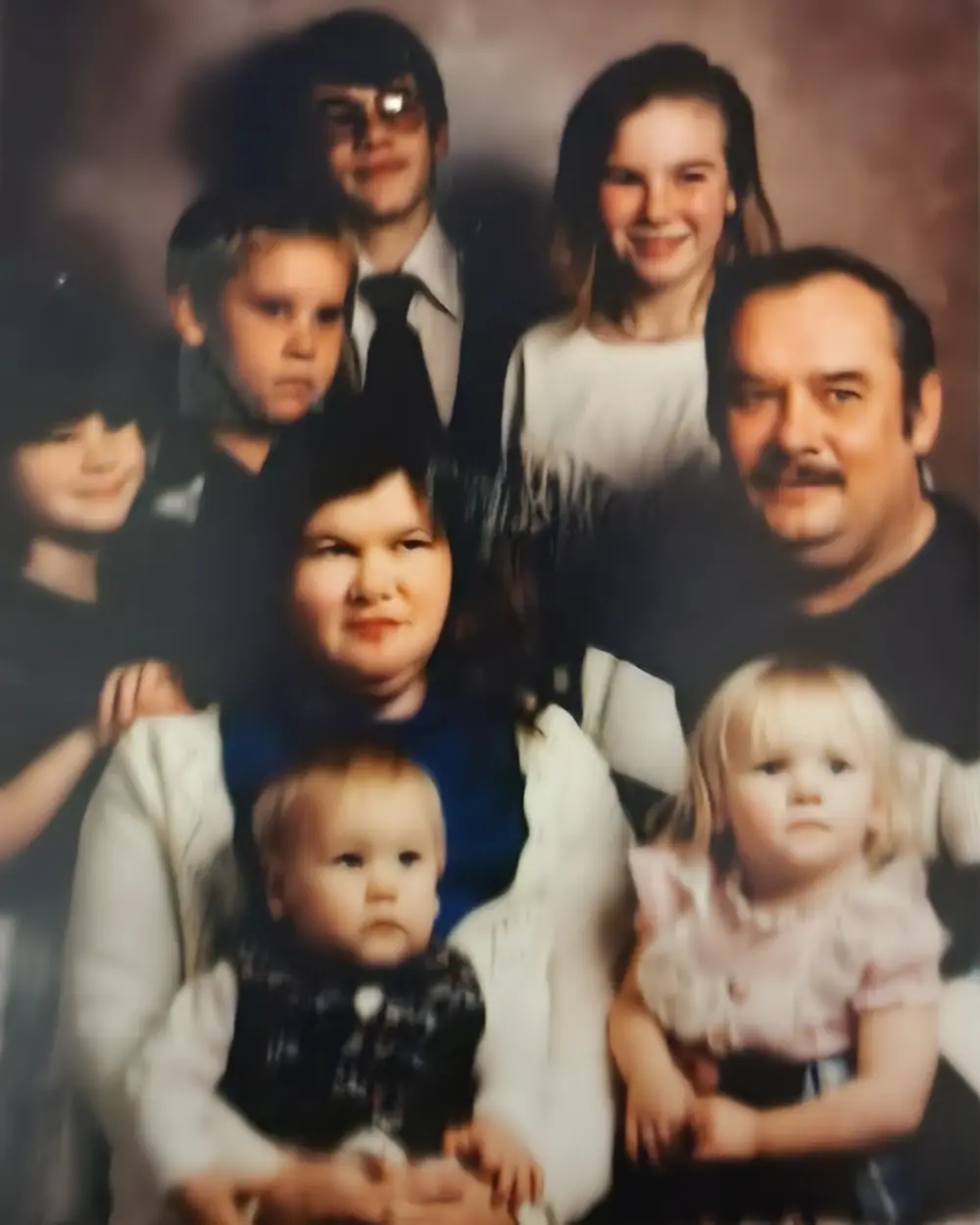
They lived in Westridge Hills, a quiet subdivision in the woods near Harpers Ferry, tucked into the Shannondale mountainside. In the 1990s, the area felt caught between past and future—once a vacation escape for DC and Baltimore families, developed in the 1950s with weekend cabins and summer cottages, it had long since evolved into a year-round community. By the time Susan was a teenager, the mountain was dotted with trailers, gravel roads, and modest homes occupied by working-class residents. It was a world at once expansive and claustrophobic: forests to roam, but little room to grow.
Susan suffered from epilepsy, a condition that traced back to a car accident when she was five years old. The seizures defined much of her adolescence. They came multiple times a week, disrupted her schooling, and sometimes made her a target for cruelty. Kids teased her, gossiped, rolled their eyes when she disappeared for hospital stays or came back with scars. At home, her condition was a source of worry and tension. In January 1997, eight months before she vanished, she underwent brain surgery at Johns Hopkins in an attempt to reduce the seizures. Surgeons removed part of her skull—temporarily clamping it to allow new bone to form—and the family was told that a blow to her head could now be fatal.
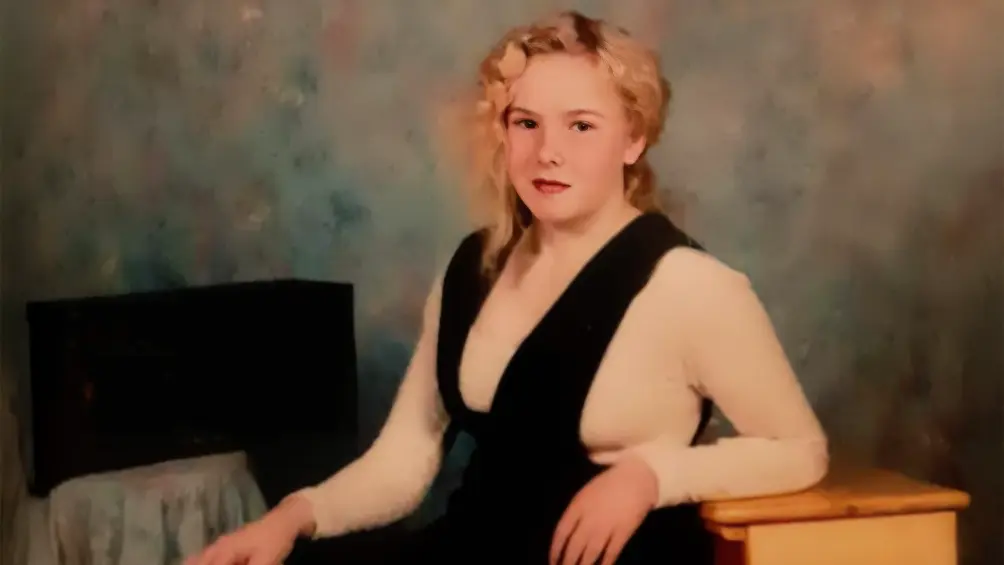
The surgery helped, but something shifted. Her mother recalled that she came back changed: moodier, more impulsive, quicker to anger. She also started skipping her medication—something they only discovered after her disappearance, when pills were found untouched in her room.
Susan’s younger sister, Audrey Hess, was just six at the time—too young to understand everything, but old enough to notice the shift. Now a mother herself, living in Missouri, Audrey still thinks about those final months—the tension in the house, the quiet changes in her sister’s mood, the feeling that something was coming.
That summer, Susan had started to push boundaries. She spent time with older boys, sometimes disappearing for hours without saying where she was going. Joyce remembered seeing her once with a group of young men by a creek near the house—she was in a bathing suit, the men were drinking. “I told her, ‘This isn’t safe,’” Joyce said. “But she didn’t listen. She thought she knew everything.”
“She was trying to grow up fast,” Audrey said years later. “I don’t think she realized how dangerous some of those people were.”
Still, Susan was more than her condition. She was tough, funny, and fiercely loyal to her siblings. When a boy broke her arm in elementary school, she waited until it healed—then broke his nose. She collected keychains from road trips and summer outings, especially those to Hersheypark. She loved animals, especially snakes, and was most comfortable barefoot in the woods or stretched out with a book. She wrote poetry about world events—the Oklahoma City bombing haunted her—and she attended school dances when she felt up to it.
She took part in the Miss Harpers Ferry Charm Revue two years in a row—first in 1994, then again in 1995. “She didn’t win,” her mother said, “but she loved being part of it.” Joyce remembered those moments fondly. “She was a bit of a drama queen,” she said. “She loved being in the spotlight.”
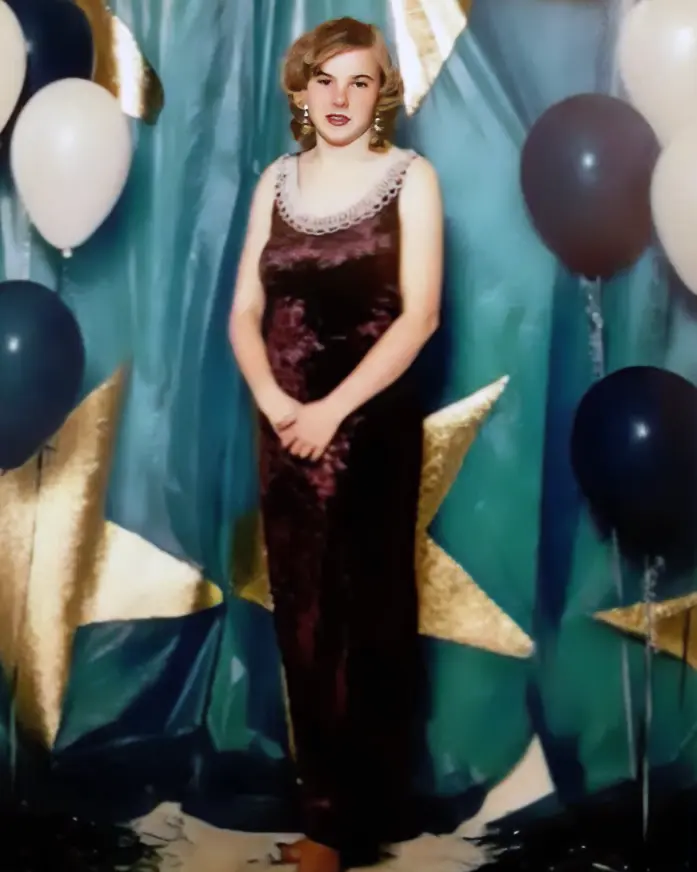
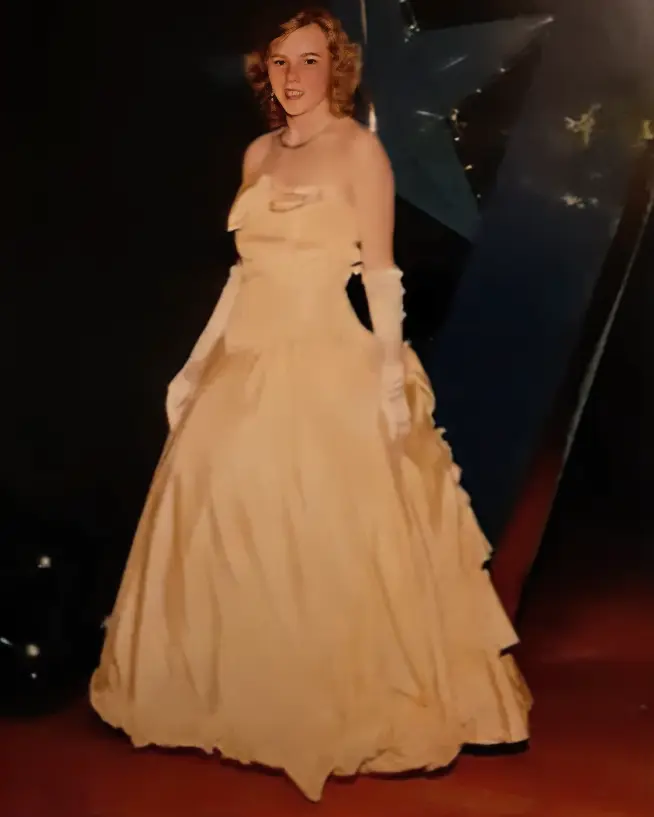
Susan Capino participating in the Miss Harpers Ferry Charm Revue. Left: 1994, her first year in the pageant, wearing a purple gown. Right: 1995, returning in a yellow gown and gloves. “She didn’t win,” her mother said, “but she loved being part of it.” (Photos courtesy of Audrey Hess)
That theatrical streak showed at home, too. Susan could be dramatic—but she was also nurturing. Her younger siblings adored her.
She was playful, always pulling harmless pranks. “She used to play tricks on family,” Joyce said. “Little pranks, I guess you would say. Not nasty tricks—just stuff to get a rise out of you.” Around her birthday, she never let her mother forget the timing. “She was born four days before my birthday,” Joyce said. “She always used to say she was my early birthday present.”
At Jefferson High School, she was entering the eleventh grade. Her attendance was inconsistent due to her health, and she didn’t have many close friends. But she wasn’t isolated. She was the kind of girl who drew people in when she wanted to, especially adults. “She had more friends older than her than people her own age,” her mother would later say, “because kids didn’t know how to treat her.”
Susan was, in many ways, in between. In between health and vulnerability. In between childhood and adulthood. In between the quiet of her mountain home and the pull of something else—something louder, freer, harder to name.
And in August 1997, she vanished into that space between.
The Night She Vanished
It was a blistering Sunday in August—the kind of late-summer day that leaves the air heavy and the ground dry. In Jefferson County, the temperature had soared to 98 degrees, unusually hot even for the season. By evening, winds had swept across the Blue Ridge, strong enough to rattle branches and stir dust along the gravel roads of Westridge Hills. As dusk settled over the mountain, a full moon rose above the ridge, casting a pale glow across the trees and trailers. The humidity climbed fast. By nightfall, the air was thick and still.
At the Capino-Lonas home on Woodpecker Lane, the day—Sunday, August 17, 1997—had followed its usual rhythm: siblings in and out of the house, their mother at work, and Susan, seventeen and restless, dividing her time between home and a nearby trailer on the property rented by the Long family. Joyce had taken a 3-to-11 shift at the Sheetz in Brunswick that day. Her husband couldn’t work due to injuries from a car accident, and she’d picked up extra hours to keep the family afloat. Later, she would wonder if things might have gone differently—if she hadn’t been gone, if she’d been there when Susan stormed out. It was there, according to her mother, that something upset her—an argument, maybe, or disapproval over the boy she was with. She came home agitated.
Around dinnertime, she clashed with her stepfather Richard over doing the dishes. It wasn’t a dramatic fight, but it was enough. Joyce and her daughter Audrey would later suggest that Susan may have picked the argument deliberately—a pretext to leave, to make an exit on her own terms.
She stormed out the back door and into the trees.
A few minutes later, headlights flickered through the woods behind the house. Red taillights appeared and then vanished. Richard ran to follow her but couldn’t catch up. One of the younger children, Samanatha, would later admit that she had briefly hidden his car keys, worried he might react too harshly. By the time he got to the road, the car—and Susan—were gone.
She left with almost nothing: a pink and orange swimsuit top, green denim shorts, black slip-on shoes. No bag. No money. No medication. Just a seventeen-year-old girl, recently recovered from brain surgery, walking into the August dark.
Joyce didn’t find out until she got home from her shift at Sheetz near midnight. She thought Susan was in bed. It wasn’t until the next morning that the family began asking around. But when they contacted the police, they were told to wait—the standard response at the time. She was almost an adult. She had run away before.
Two days passed before the missing person report was officially filed on August 19. By then, Susan was listed as a runaway.
Flyers went up around the neighborhood—on telephone poles, at gas stations, near the cluster of mailboxes at the bottom of the hill. But the terrain worked against them. Westridge Hills was dense and wooded. Even in daylight, visibility between homes was limited. And in time, the flyers began to disappear.
No one outside the family reported seeing Susan leave. Inside the home, tensions mounted. Whispers soon followed—rumors passed through the neighborhood, feeding suspicion and shaping where police chose to look. Joyce denied any suggestion of family involvement. “If I thought Richard had done something to her,” she would later say, “I would’ve called the cops myself.”
Police brought cadaver dogs. They searched the property and unearthed nothing but old family pets—a buried dog, a ferret. Attention shifted toward the family. Suspicions lingered.
Susan’s disappearance fell out of the news within weeks. Her name stayed in the system, but there were no leads. No tips. Just the porch light left on and a silence that deepened with each passing year.
It would be four years before anyone found her.
A Search That Turned Inward
When Susan Capino was reported missing on August 19, 1997, she was seventeen—legally still a juvenile, but close enough to adulthood that authorities hesitated. West Virginia State Police entered her into the system as a runaway. At the time, there was no AMBER Alert program in place, no coordinated press outreach, and no immediate mobilization.
Her family pushed for more. Joyce called repeatedly. But the first weeks passed with little action. At home, suspicion began to settle inward. Susan had left after an argument, and with no witnesses to her departure, rumors spread. Police soon turned their attention to the family.
State troopers brought in cadaver dogs and searched the yard. They dug up several areas, ultimately uncovering only the remains of family pets.
“One of the spots they hit was where we’d buried Susan’s ferret,” Joyce recalled. “The kids had made a little cross out of sticks. The police dug it up like it was going to be something awful. I told them, ‘That’s Bandit. He died last year. My son cried for a week.’”
Two vehicles were impounded, and police obtained a warrant to search the house.
“They tore everything up, and I just let them,” Joyce said. “I told them, ‘Do what you gotta do—just find my daughter.’”
“I remember the police were everywhere, and I didn’t really understand what was happening,” said Audrey. “I just knew Susan was gone and nobody could tell me why.”
In public, Richard told The Herald-Mail in 1997, “They got the whole family upset. I tried to cooperate, but they’re looking in the wrong direction.”
Joyce remembered that frustration clearly. “He said, ‘I’m not gonna be treated like a criminal when I didn’t do nothing.’”
Richard died in 2024.
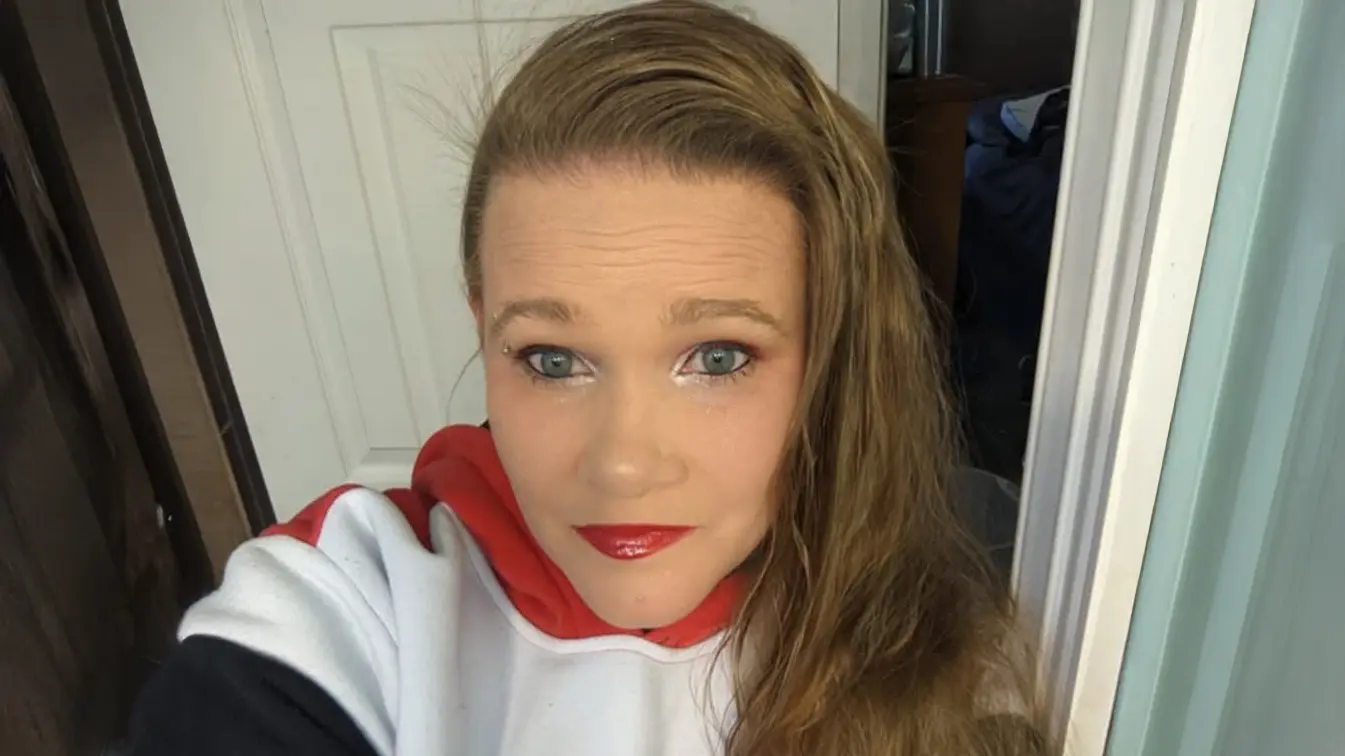
Despite the early strain, the case gained traction in late September when the FBI formally joined the investigation. Nearly 70 agents, according to local reports, assisted state police in canvassing the Westridge Hills neighborhood. They went door to door, combed nearby woods, and collected possible evidence from multiple locations. What evidence was collected—if any—and what came of it remains unknown.
Senior Trooper Jose Centeno, the lead state investigator at the time, told The Herald-Mail that they hadn’t ruled out foul play—but added, “We have to find her first. Once we’ve found her, then we’ll know.” The priority, he said, was locating a missing child. Any criminal investigation would come later.
The press began to take notice. Articles ran in The Herald-Mail, the Charleston Gazette, and the Washington Post. Most repeated the same few details: that Susan had epilepsy, that she left after a minor argument, and that the FBI was assisting. But even with national resources on the case, there were no sightings, no tips, and no forensic breakthrough.
Within a few weeks, the search effort stalled. The FBI reduced its footprint. State police stopped issuing updates. Public interest waned. And the official posture—that Susan had likely run away—returned to the forefront.
To her family, it felt like the system had closed in around them—not to protect them, but to accuse them. “They treated us like suspects,” Joyce would later say. “But they never treated her like a victim.”
By winter, the case had gone cold.
A Breakthrough Born of Tragedy
In the spring of 2001, the quiet stretch of mountain along the Virginia–West Virginia border began giving up its secrets.
One afternoon in April, a hiker lost along the Appalachian Trail stumbled into a discovery that had waited in silence for a year.
He veered off-course near the state line, not far from Keys Gap, and came upon human remains scattered in a wooded clearing. Authorities identified the body as Eric Cheeks, a 19-year-old from Jefferson County—a classmate of Susan’s—who had vanished on April 22, 2000. His remains were found exactly one year later, on April 23, 2001.
The discovery was a shock—but it wasn’t connected to Susan’s case.
A few weeks later, in May, another tragedy struck the same mountain region. Patrick Hornbaker, a 32-year-old from Loudoun County, was shot and killed during what appeared to be a robbery inside a house just across the Virginia border.
While investigating Hornbaker’s murder, law enforcement returned to the area on June 8 to search for additional evidence. A team of cadets, reportedly from the Loudoun County Sheriff’s Office, was assigned to sweep the woods in that same ravine.
That’s when they found something else.
In a steep, wooded hollow near Charles Town Pike—on the property where Hornbaker had died—they discovered skeletal remains: a skull, bone fragments, bits of clothing. The bones were fragile, scattered by time and weather.
Word reached the family before confirmation did.
“We heard about them finding human remains up on the mountain,” said Audrey, who was ten at the time. “And for some reason, my aunt heard that and she just got a sickening feeling. She called my parents and was like, ‘I think they just found Susie.’”
Dental records confirmed what her family already feared.
“They called me and asked who her dentist was,” Joyce recalled. “They tested the remains—through DNA, through comparing dental work—and decided they were hers.”
Susan Capino had been found.
She had been there all along—just over a mile from her family’s home in Westridge Hills, hidden beneath leaves and brush. The cause of death was blunt force trauma to the head. Her death was ruled a homicide.
The Driveway That Connects Two Deaths
When Susan Capino’s remains were discovered in June 2001, they were found in a wooded clearing off the long dirt driveway leading to a home on Charles Town Pike—the same home where Patrick Hornbaker had been murdered just three weeks earlier.
That fact has sparked speculation. But the public record is clear: Hornbaker’s death was the result of a burglary, and his killer, Robert E. Roy, had no known connection to Susan. Roy was convicted 12 years later through DNA and fingerprint evidence—and nothing in the court filings, investigative statements, or press coverage has ever suggested a link between the two cases beyond the terrain.
What remains extraordinary, though, is the setting: a private, unpaved driveway in a secluded stretch of Blue Ridge Mountain, near the West Virginia–Virginia border. Whoever left Susan’s body there likely knew the area well—and either believed it was abandoned or had reason to think no one would come looking. That belief was nearly right. Her body was only found because police happened to be searching the woods for something else entirely.
In the end, the overlap between Susan Capino and Patrick Hornbaker may not tell us who hurt her. But it does underscore just how close her body was to being lost forever.
Joyce was contacted, and for a brief moment, it seemed they might finally bring Susan home. The family made arrangements through a local funeral home. They intended to have her cremated.
Then the sheriff’s office intervened.
“When they found out we were going to cremate her, they seized the remains,” Joyce said. “They said we were trying to destroy evidence.”
The family was stunned. There was no arrest. No public update. And no closure. Because the remains were discovered just across the state line, the case shifted to the Loudoun County Sheriff's Office—and with it, so did control of Susan’s body.
They never let her bring Susan home.
Forensics and the Missing Years
After Susan Capino’s remains were identified in June 2001, what little momentum the case had seemed to fade again.
The cause of death—blunt force trauma to the head—was confirmed, but investigators released almost no additional information. There were no new interviews, no public appeals for witnesses, no sketches or timelines. To the family, it felt like the case had been closed in everything but name.
“There was never a follow-up,” Joyce said. “They told us they were keeping the remains for evidence. But they never said what evidence. Or what they were doing with it.”
She asked if they had taken DNA. She asked whether they found anything nearby—clothing, jewelry, signs of a struggle. The answers were always the same: they couldn’t say. The investigation was ongoing.
More than two decades have passed since then.
The remains have never been returned. The family never received a full autopsy report. No one has explained why her body was found less than two miles from home, or whether the nearby murder of Patrick Hornbaker was ever considered related.
When pressed in later years, Joyce was told there was still “an open case” in Virginia. But as far as she could tell, no one was actively working it.
Audrey remembers that silence vividly. “It was like she disappeared all over again,” she said. “Except this time, nobody was looking.”
The family had no grave to visit, no place to leave flowers—just a reclassified homicide and a body held indefinitely by an agency that no longer returned their calls.
Even mourning was put on hold.
Rumors, Reputations, and Red Herrings
Susan had left home after an argument with her stepfather. There were no outside witnesses. No security footage. No footprints or trail. And before long, the weight of suspicion landed squarely on the people she lived with.
Joyce believed that investigators locked into a theory early on—and ignored anything that didn’t support it. “They were stupid,” she said. “They ignored everything that didn’t fit what they’d already decided.”
She never doubted her husband’s innocence. Not just because of who he was, but because of what he physically couldn’t do.
“He was in a severe car accident,” Joyce explained. “The crash basically tore his elbow off.” The injury required multiple surgeries and left Richard with chronic pain. “My husband was not a violent man,” Joyce said. “And Susan—she was a fighter. If someone tried to hurt her, she’d fight back.”
Joyce said the accusations never made sense to her. “If I thought he had done something to her,” she said, “I would’ve called the f***ing cops on him myself. You don’t touch my kids.”
Audrey agreed. “He raised us,” she said. “Dad might not have been perfect, but I never believed he had anything to do with what happened to Susan.”
Joyce remembered that Richard had even tried to follow Susan the night she disappeared.
“He tried to jump in his car and follow,” she said. “But by the time his vehicle got around, I mean, they were long gone.”
Still, suspicion lingered. Much of it, Joyce believed, was fueled by two girls from the neighborhood who kept contacting police.
“They told the police that Richard hit Susan with a baseball bat,” Joyce recalled. The story supposedly came to the girls through Samanatha, one of Susan’s younger siblings—something Joyce insisted was “nonsense.” But the police took it seriously. Searches were conducted. The yard was dug up. An old, broken baseball bat was taken from the property. And the theory stuck.
Then the focus shifted again—this time to Susan’s older brother, Steven, who had cerebral palsy.
“They almost tried to accuse my brother Steven of killing her too,” Audrey said. “They tried to say he used to try to have sex with my sister, and then he got mad because she rejected him and killed her.” Police pulled him aside, put him in the back of a squad car, and questioned him until he cried. “My dad had to go get him and calm him down.”
Joyce remembered it the same way. “They even went so far as to ask Steven, you know, did he hurt his sister? Which he couldn’t—he was crippled,” she said. “And Susan was a little badass. If he’d tried to hurt her, she would’ve beat the crap out of him.”
“Those girls just kept calling,” Joyce said. “Changing their stories. Saying whatever would keep it going. And after a while, I began to think—maybe they actually knew the truth and just made that story up.”
What haunted her most was what came later.
“My gut feeling—I feel those two girls know more than what they’re telling,” she said. “Because how do they—I mean, there’s the one that said that Samanatha said that Richard hit her with a baseball bat. And then when she was found, they found trauma to her head. Is that a coincidence or what?”
In the absence of real answers, the suspicion stayed in the air—but never turned into anything more. No charges were ever filed. No forensic evidence ever pointed to the family. And when cadaver dogs searched the property, they turned up only the remains of buried pets.
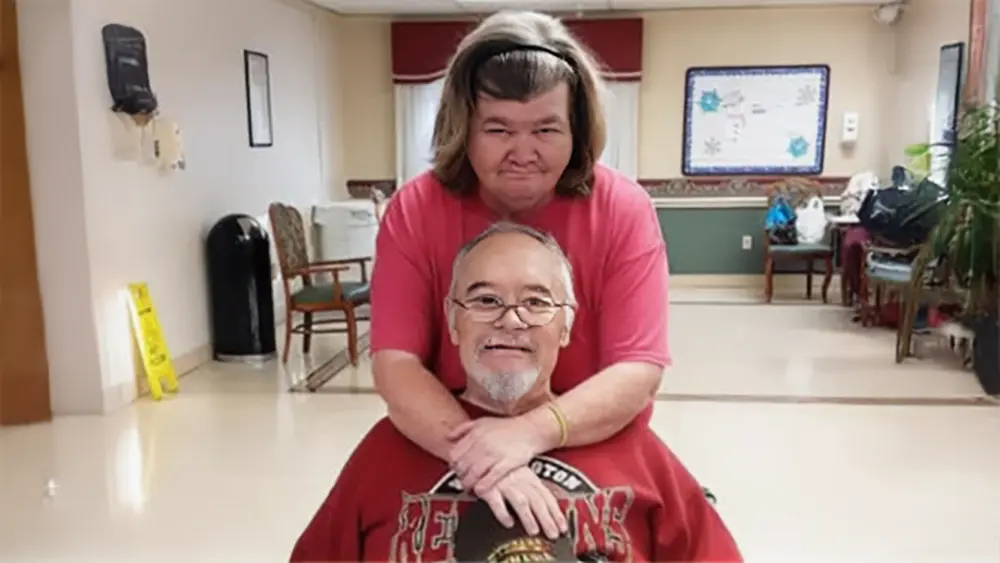
Even years later, the feeling lingered—that investigators had spent more time looking inside the house than looking for the person who took Susan’s life.
“They didn’t treat her like someone who needed to be found,” Joyce said. “They treated us like the problem.”
Richard took the suspicion to his grave.
Unanswered Questions
More than two decades later, the most basic questions about Susan Capino’s death remain unanswered.
Was she killed the night she vanished?
Was it someone she knew?
Why was her body left just over the border?
And why, after her remains were found, did the investigation go quiet?
No suspect has ever been named. No arrest has ever been made. The case is still technically open, but for years, there have been no public updates—no press releases, no briefings, no acknowledgment that anyone is still looking.
Susan’s remains have never been returned. Joyce asked if they could come home. She was told no—they were evidence. She kept asking. The answer never changed.
More than twenty years later, the family still doesn’t know exactly where she is.
“They have not released her remains to me,” Joyce said. “I’m not sure who has them. I mean, FBI might have them—I don’t know.”
The terrain where she was found—the ravines near Keys Gap—has a reputation. In the spring of 2001, three bodies were found in that same wooded corridor: Susan Capino, Eric Cheeks, and Patrick Hornbaker. There is no known connection between the cases. Hornbaker was killed in a robbery. Cheeks, a classmate of Susan’s, had been missing for a year. The timing was likely coincidence. But it left an impression.
Two Teens, One Mountain—But No Proven Link
Eric Cheeks, Jefferson High School Class of 1998, disappeared in April 2000. His remains were found nearly a year later, in April 2001, in the wooded terrain near Keys Gap. Two months after that, Susan Capino, Class of 1999, was discovered about 2.5 miles away, off a private driveway in the same remote mountain region. In life, they had lived just half a mile apart in Shannondale, and their circles of friends likely overlapped.
Despite these parallels, investigators never linked the two cases. Eric’s death was never conclusively ruled a homicide and may have been the result of an alcohol-related mishap. Susan’s was ruled a homicide caused by blunt force trauma. To date, no evidence has surfaced connecting the two—only geography, timing, and a coincidence that continues to raise questions.
Even now, no one can say what evidence—if any—was recovered with Susan’s remains. If there were clothes, DNA, or personal items, they were never disclosed. FOIA requests filed in recent years have been denied or remain pending.
To her family, it feels like the case wasn’t just unsolved—it was abandoned. Even from hundreds of miles away in Missouri, Audrey still wonders why nothing has changed.
“She’s still evidence,” Joyce said. “That’s all they’ve ever told me.”
The silence has endured.
A Story Slipping Away
Nearly three decades have passed, and Susan Capino’s story still doesn’t have an ending.
No one was ever charged. No one was ever cleared. And no one—not even her family—was ever told what happened. The investigation faded, quietly, into the background.
Joyce never stopped asking for answers. She still hopes for justice—but her definition is simpler than most. “I don’t want to go to my grave not knowing the truth,” she said. “I wish they would give me her remains so I could take care of her.”
Even that small act was denied. They never let her come home.
In 2012, the family’s home burned down. What little they had left of Susan—photos, mementos, newspaper clippings—was lost in the fire. “Oh yeah,” Audrey said. “We lost everything.”
Richard died before he got to know what happened to his stepdaughter—a fact that weighs heavily on the family. In his final years, he battled Parkinson’s disease and dementia, spending time in nursing care before passing in 2024. “We always talked about it,” Joyce said. “He wanted to know what actually really did happen.” Audrey echoed that sadness. “My dad’s gone,” she said. “And I don’t think it’s fair that they’ve continued to withhold her remains.”
Audrey, who once called Susan her best friend, still imagines what she would say if she had the chance. Joyce doesn’t need words—just a hug, a kiss, and the chance to hold her daughter one more time. “There’s not a day that goes by I don’t think about her,” she said.
But just weeks later, the world shifted. In the chaos and tragedy of September 11, 2001, national attention turned elsewhere.
9/11 didn’t erase Susan’s story—it finalized its disappearance.
And so it remains: unsolved, unspoken, and incomplete.
Have Information About This Case?
If you have any information related to the disappearance or death of Susan Capino, please contact one of the following law enforcement agencies:
- West Virginia State Police – Charles Town Detachment
(304) 725-9779 - Loudoun County Sheriff’s Office – Criminal Investigations Division
(703) 777-0475
Tips may be submitted anonymously. Even the smallest detail could help bring answers to a family that has waited more than 25 years.
